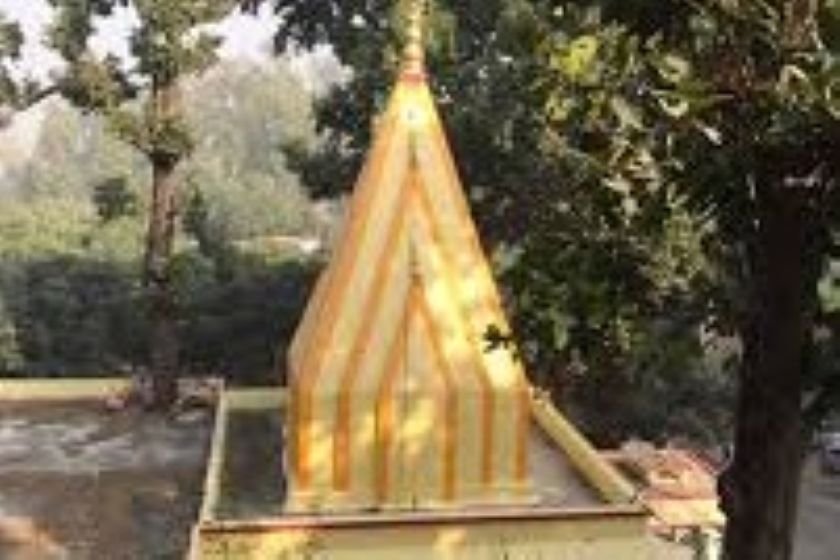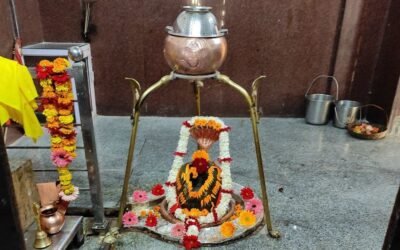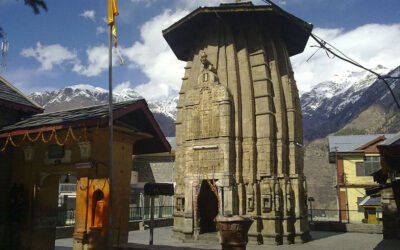Where the Yamuna whispers mantras, and the hills cradle a yogi’s devotion
Tucked near the spiritual town of Paonta Sahib in Sirmaur district, the Patalian Jyotirlinga Temple—also known as the Patanjali Jyotirlinga Temple—is a lesser-known yet deeply revered Shaivite shrine, believed to have been sanctified by Sage Patanjali, the father of yoga and compiler of the Yoga Sutras. Set along the banks of the Yamuna River, this temple is a tranquil haven for seekers of inner stillness and divine connection.
🌄 Location & Accessibility
- Location: Near Paonta Sahib, Sirmaur District, Himachal Pradesh – 173025
- Altitude: ~400 meters
- By Road: Easily accessible from Paonta Sahib (approx. 5–7 km); well-connected to Nahan, Dehradun, and Chandigarh
- By Rail: Yamunanagar (~56 km) or Dehradun (~50 km)
- By Air: Chandigarh Airport (~132 km) or Jolly Grant Airport, Dehradun (~70 km)
- On Foot: A short walk from the roadside through forested paths and riverside trails
🕉️ Deity & Worship
The temple is dedicated to Lord Shiva, enshrined here as a Jyotirlinga, and is believed to have been worshipped by Sage Patanjali himself. The presence of Patanjali’s image within the temple reflects its deep yogic and spiritual lineage.
Devotees offer bilva leaves, milk, and ghee lamps, and the temple is especially visited by those seeking spiritual clarity, healing, and yogic discipline. Rituals include abhishek with Yamuna water, chanting of Rudram, and meditation under the ancient trees that surround the sanctum.
🏛️ Architecture & Setting
The Patalian Jyotirlinga Temple is a modest stone structure, with:
- A Shivlinga sanctum believed to be self-manifested
- A courtyard shaded by banyan and peepal trees
- A serene riverside setting, ideal for meditation and introspection
- A statue of Sage Patanjali, honoring his connection to the site
The temple’s unassuming design enhances its spiritual gravity, making it a favorite for yogis, sadhus, and quiet pilgrims.
📜 Mythological Significance
According to tradition, Sage Patanjali, a disciple of Ved Vyasa, meditated at this site and invoked Lord Shiva as a Jyotirlinga. The temple is thus considered a spiritual bridge between yoga and Shaivism, where discipline meets devotion.
The name “Patalian” may derive from Patanjali, and the temple is believed to be a gateway to inner realms (patal) of consciousness, accessible through yogic practice and Shiva’s grace.
🎉 Festivals & Celebrations
- Mahashivratri: Celebrated with night-long bhajans, havans, and riverside rituals
- Shravan Mondays: Special abhisheks and offerings during the monsoon month
- Daily Worship: Morning and evening aartis, incense offerings, and chanting of Shiva mantras
🏞️ Nearby Attractions
- Gurudwara Paonta Sahib: A major Sikh pilgrimage site associated with Guru Gobind Singh
- Kaleshwar Mahadev Temple, Amb: A riverside Shiva shrine with mythic origins
- Renuka Ji & Parshuram Temple: A sacred mother-son pilgrimage site
- Kalesar National Park: A nearby forest reserve ideal for nature walks and reflection
🙏 Spiritual Experience
The Patalian Jyotirlinga Temple is not just a shrine—it is a yogi’s whisper carved in stone, a place where Shiva’s stillness meets Patanjali’s breath, and the river carries your prayers like mantras on the wind. As you sit by the sanctum, with the Yamuna flowing gently and the trees swaying in silence, you feel the presence of a god who listens, and a sage who still watches. It is a temple where discipline becomes devotion, and the **soul finds its axis in the stillness of the self.




